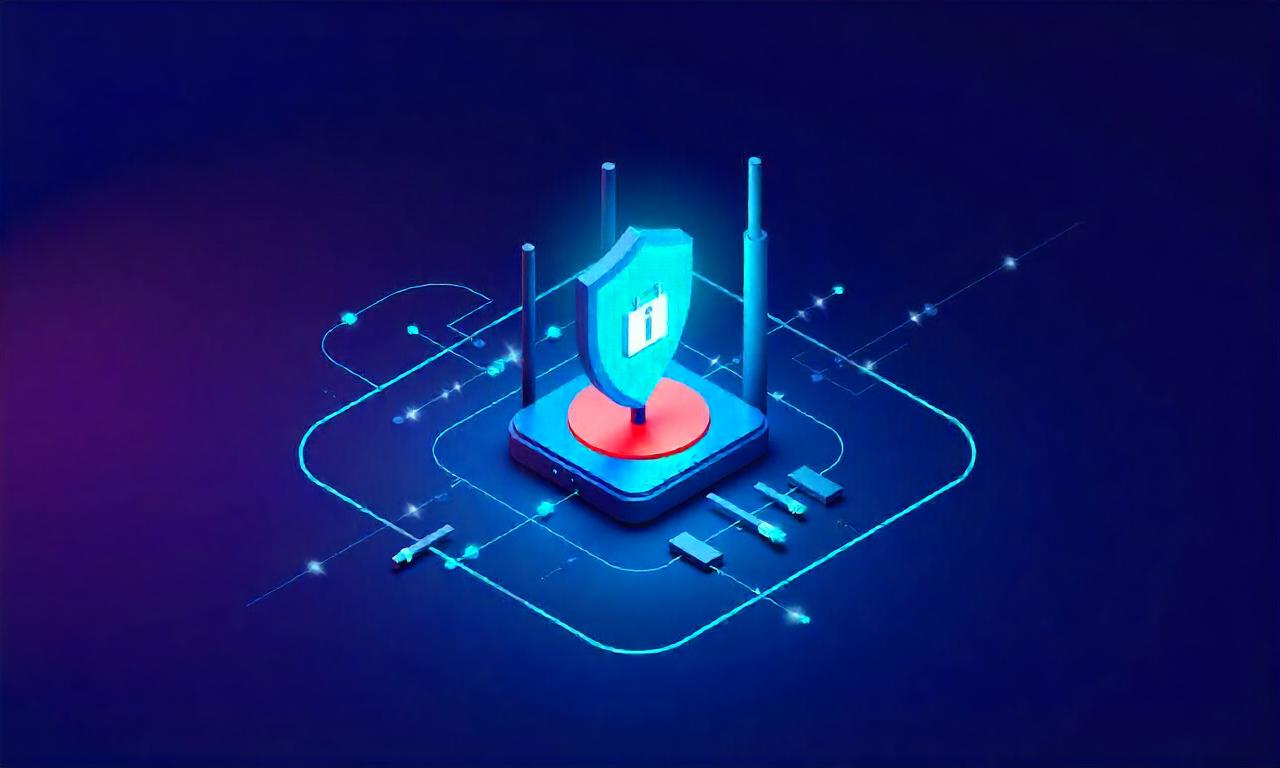In today’s digital age, privacy and security have become paramount for users who want to protect their online activities. One of the most effective ways to secure your network is by setting up a VPN (Virtual Private Network) directly on your router. This method ensures that all devices connected to your network—whether it’s a smartphone, laptop, or smart TV—benefit from the same layer of encryption and anonymity. If you’re wondering how to set up a vpn on a router, you’ve come to the right place. This guide will walk you through the process of configuring a VPN on your router, from selecting the right service to troubleshooting common issues. By the end, you’ll have a fully secure home network that shields your data from prying eyes, no matter where you are in the world.
Table of Contents
ToggleChoosing the Right VPN Service
Before you can set up a VPN on your router, it’s essential to select a reliable service that supports router compatibility. Not all VPNs are designed for use on routers, so you’ll need to ensure your chosen provider offers such functionality. The first step is to compare different VPN services based on key factors like performance, security features, and user-friendliness.
Factors to Consider When Selecting a VPN
When choosing a VPN service for your router, several factors should guide your decision. First, check if the VPN supports router configuration. Many VPNs offer router-specific settings, but some only support certain brands or models. Second, consider the encryption protocol used by the VPN. Strong protocols like OpenVPN or IKEv2 are ideal for router-based setups. Third, look at the server locations available. A VPN with servers in multiple regions can help you bypass geo-restrictions and access content from different countries.
Another important factor is the speed of the VPN. Since your router will be sharing the connection with all devices, a slow VPN can impact your overall internet experience. Additionally, user reviews and customer support can provide valuable insights. A VPN with 24/7 support and a solid reputation is more likely to resolve any issues quickly. Finally, pricing plays a role. Some VPNs offer free tiers, but they may have limitations when used on routers. A paid plan ensures consistent performance and advanced features.
1 Comparing Popular Router-Compatible VPN Services
Here’s a table comparing some of the most popular VPNs that are compatible with routers:
| VPN Service | Router Compatibility | Encryption Protocols | Speed Performance | Server Locations | Price (Monthly) | |——————|—————————-|————————-|———————–|————————|———————| | NordVPN | ✅ Yes | OpenVPN, IKEv2 | ★★★★☆ | 50+ countries | $11.99 | | ExpressVPN | ✅ Yes | OpenVPN, IKEv2 | ★★★★★ | 90+ countries | $12.95 | | Surfshark | ✅ Yes | OpenVPN, IKEv2 | ★★★★☆ | 30+ countries | $2.49 | | VyprVPN | ✅ Yes | Chacha20, OpenVPN | ★★★☆☆ | 70+ countries | $12.95 | | IPVanish | ✅ Yes | OpenVPN, IKEv2 | ★★★★☆ | 50+ countries | $10.00 |
This comparison helps you decide based on your specific needs. For instance, if you prioritize speed, ExpressVPN may be the best option, while Surfshark offers an affordable VPN with excellent value for money.
2 Key Features to Look for in a Router-Ready VPN
Beyond compatibility, certain features are crucial for a router-based setup. Dual-WAN support allows you to use two internet connections simultaneously, enhancing redundancy and speed. Kill switch functionality ensures your connection drops if the VPN disconnects, preventing data leaks. Additionally, split tunneling lets you route specific traffic through the VPN while leaving other traffic on your regular internet connection.
Another important feature is logging policies. A reliable VPN should have a strict no-logs policy to protect your privacy. Some VPNs also offer advanced security options like DNS leak protection or IPv6 leak protection, which are essential for comprehensive protection. Lastly, mobile apps or smartphone apps can be beneficial if you want to manage your VPN settings remotely.
Accessing Router Settings
Once you’ve selected a VPN service, the next step is to access your router's settings. This process varies depending on your router model, but the general steps are similar. Understanding how to navigate your router’s interface is the first step in setting up a vpn on your router.
Identifying Your Router Model
Before you can begin configuring your router, you’ll need to identify your model. This information is typically found on the router’s label or in the settings menu. For example, if your router is a TP-Link Archer A7, you can access its web interface by entering its IP address (like 192.168.0.1) into a browser. Alternatively, if you have a Netgear R6700, you might need to log in using the default admin credentials.
Knowing your router model is crucial because the setup process may differ slightly. Some routers support VPN configuration through their web-based interface, while others require a mobile app or third-party firmware like DD-WRT. If your router doesn’t support VPNs, you might need to consider upgrading to a model that does or using third-party firmware.
2 Locating the Router’s Web Interface
After identifying your router model, the next step is to locate its web interface. This is usually accessed by entering the router’s IP address into a browser. If you’re unsure of the IP address, you can check it by running a command like `ipconfig` on Windows or `ifconfig` on macOS/Linux. The default IP address for most routers is either 192.168.0.1 or 192.168.1.1.
Once you’re on the web interface, you’ll need to log in with the admin username and password. If you haven’t changed these, they’re often printed on the router’s label. If you have, you’ll need to retrieve them from your settings or configuration files. After logging in, navigate to the Wireless or Advanced Settings section, where you’ll find the VPN configuration options.
Configuring the VPN on Your Router
Now that you’ve accessed your router’s settings, it’s time to configure the VPN. This process involves entering your VPN credentials and selecting the appropriate protocol. The configuration steps can vary depending on your router model, but the general procedure remains consistent.
Entering VPN Credentials
The first step in configuring a vpn on your router is to enter your VPN credentials. These typically include your username, password, and server address. You’ll need to find the VPN configuration section in your router’s settings. This is often located under Advanced Settings or Security. Once there, select the type of connection you want to use—usually PPTP, L2TP, OpenVPN, or IKEv2.
For OpenVPN or IKEv2, you’ll also need to upload the configuration file provided by your VPN service. This file usually contains the server address, port number, and encryption settings. Make sure to download the correct file for your router model. If you’re unsure, check the VPN provider’s website for router-specific instructions.
1 Selecting the Correct Protocol
Choosing the right protocol is crucial for the success of your vpn setup. PPTP is the simplest protocol but offers lower security compared to OpenVPN or IKEv2. L2TP is a good middle ground, providing stronger security than PPTP but slightly more complex configuration. OpenVPN is widely regarded as the most secure and flexible protocol, making it ideal for router-based setups. However, it requires more technical knowledge to configure.
If you’re using IKEv2, it’s a fast and secure protocol that’s particularly well-suited for mobile devices. However, it’s also compatible with routers and offers strong encryption. Some routers may not support IKEv2, so it’s important to check your device’s compatibility before proceeding.
2 Applying Configuration Settings
Once you’ve entered your credentials and selected the protocol, you’ll need to apply the configuration. This involves saving your settings and rebooting your router to ensure the changes take effect. Some routers automatically apply the settings when you click “Save,” while others require a manual reboot.
After rebooting, your router should be connected to the VPN. You can verify this by checking the status page or network settings. If everything is correctly configured, you’ll see a connected status indicating that your internet traffic is now encrypted through the VPN.
Testing the Connection
After configuring the vpn on your router, it’s important to test the connection to ensure it’s working as intended. A successful VPN setup means all your devices are securely connected to the internet. To confirm this, you can run a few tests like checking your IP address, DNS settings, or website access.

Verifying the Connection
The first step in testing the vpn connection is to verify that the connection is active. Log in to your router’s admin interface and check the VPN status. If the connection is successful, you’ll see a confirmation message or an online indicator. Alternatively, you can use a third-party tool like IPLeak to check if your public IP address has changed, which is a key indicator of a working VPN.
You can also check your DNS settings to ensure they’re being routed through the VPN provider’s servers. This is important because even if the VPN connection is active, your DNS traffic might still be exposed. To test this, open a web browser and visit a DNS leak test website. If your DNS is leaking, you may need to enable DNS encryption or configure the DNS settings manually.
1 Checking for DNS Leaks
A DNS leak occurs when your device sends DNS requests to a public DNS server instead of the VPN provider’s DNS server. This can compromise your privacy because your ISP might still see the websites you visit. To check for DNS leaks, you can use tools like DNS Leak Test or ipleak.net. These tools will show you the DNS servers your router is using.
If you notice that your DNS is leaking, you can fix it by manually changing the DNS settings in your router’s configuration. Some VPNs offer DNS leak protection as a built-in feature, so you might not need to do this manually. If you’re using OpenVPN, you can configure the DNS settings by selecting the "Use custom DNS" option and entering the provider’s DNS servers.
2 Ensuring All Devices Are Protected
After confirming the connection is active and there are no DNS leaks, you should ensure all devices on your network are protected. This means checking if each device is using the same encrypted connection. For example, if you have a smartphone and a laptop connected to your router, both should benefit from the vpn setup.
You can verify this by checking the network settings on each device. On a laptop, go to Network and Sharing Center and look for the VPN connection. On a smartphone, check the Wi-Fi settings and confirm the connection is secure. If you see any discrepancies, you may need to restart your router or reconfigure the settings.
Advanced Tips and Best Practices
Even after successfully setting up a vpn on your router, there are advanced tips and best practices to enhance your security and performance. These strategies can help you maximize the benefits of your router-based vpn and avoid common pitfalls.
Optimizing for Speed and Performance
One of the most important best practices when using a router-based vpn is to optimize for speed. Since your router is handling all network traffic, a slow vpn connection can affect your overall internet speed. To improve performance, choose a VPN provider with fast servers and low latency. Additionally, selecting the right protocol can also impact speed. For example, IKEv2 is known for its fast connection speeds, making it ideal for high-speed networks.
Another tip is to adjust the port settings. Some VPNs use non-standard ports, which can sometimes be blocked by your ISP or firewall. If you’re experiencing slow speeds, try changing the port to a more commonly used one, such as port 443 or port 80, which are often not blocked. You can configure the port settings in your router’s vpn section.
1 Enabling Additional Security Features
In addition to speed optimization, enabling additional security features can further protect your network. For example, enable the kill switch to automatically disconnect your internet if the vpn connection drops, preventing data leaks. Some routers allow you to configure a kill switch directly in the vpn settings, while others require additional firmware.
Another security feature to consider is split tunneling, which lets you route specific traffic through the vpn while keeping other traffic on your regular internet connection. This is useful if you want to secure only certain devices or access specific websites securely. To enable split tunneling, look for the "Split Tunnel" option in your router’s vpn settings.
2 Regularly Updating Your Router and VPN Software
To maintain optimal performance and security, it’s important to regularly update your router’s firmware and vpn software. Manufacturers often release security patches and performance improvements that can enhance your vpn setup. For example, if you’re using a router with DD-WRT firmware, check for updates on the DD-WRT website.
Similarly, your VPN provider may release updates to improve encryption or add new features. Make sure to check for updates on your vpn provider’s website and apply them as needed. Some VPNs offer automatic updates, while others require manual intervention.
Frequently Asked Questions (FAQ)
Q1: What is the best way to set up a vpn on your router?
A1: The best way to set up a vpn on your router depends on your router model and vpn service. Most routers support PPTP, L2TP, or OpenVPN, so selecting a compatible protocol is essential. For advanced users, using DD-WRT firmware can provide greater flexibility and customization.
Q2: Can I use any vpn on my router?
A2: Not all VPNs are compatible with routers, so you must choose a service that supports router-based setup. NordVPN, ExpressVPN, and Surfshark are popular options that offer router compatibility. Check your router’s specifications or the vpn provider’s website to confirm compatibility.
Q3: How to set up a vpn on your router in 10 minutes?
A3: Setting up a vpn on your router can be completed in 10 minutes if you follow the steps outlined in this guide. Log in to your router’s admin interface, select the vpn configuration, and enter your credentials. Once configured, reboot your router and test the connection to ensure everything is working correctly.
Q4: What should I do if my vpn connection fails?
A4: If your vpn connection fails, check the settings in your router’s admin interface to ensure the credentials are correct. Verify the protocol you selected is supported by your router. If the issue persists, restart your router or contact your vpn provider’s support team for further assistance.
Q5: Is using a vpn on your router more secure than on individual devices?
A5: Yes, using a vpn on your router is more secure than setting it up on individual devices because it protects all devices on your network. This means your smartphone, laptop, and smart TV are all encrypted and anonymized through the same secure connection.
Conclusion
Setting up a vpn on your router is a powerful way to secure your entire network and protect your privacy. By following the steps outlined in this guide, you can configure your router with a reliable vpn service in a relatively short amount of time. Whether you’re prioritizing speed, security, or ease of use, there are options available to suit your needs. Additionally, regularly updating your router and vpn software ensures optimal performance and protection against new threats. With a properly configured vpn, you can enjoy a safer online experience without having to configure each device individually.
Summary Setting up a vpn on your router offers comprehensive security for all connected devices. By choosing the right vpn service, accessing your router’s settings, and configuring the connection, you can protect your data and access content securely. Key steps include selecting a compatible protocol, entering your credentials, and testing the connection for leaks or performance issues. Regular updates and security features like kill switches further enhance your protection. With a router-based vpn setup, you can enjoy a more seamless and secure browsing experience.
















